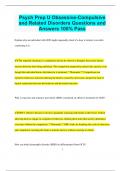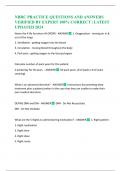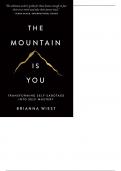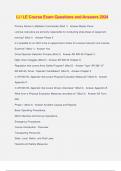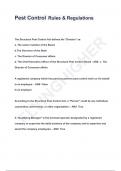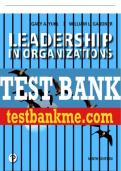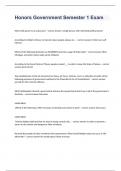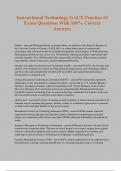Exam (elaborations)
Psych Prep U Obsessive-Compulsive and Related Disorders Questions and Answers 100% Pass
- Course
- Institution
Psych Prep U Obsessive-Compulsive and Related Disorders Questions and Answers 100% Pass Explain why an individual with OCD might repeatedly check if a door is locked, even after confirming it is. The repeated checking is a compulsion driven by obsessive thoughts that create intense anxi...
[Show more]
